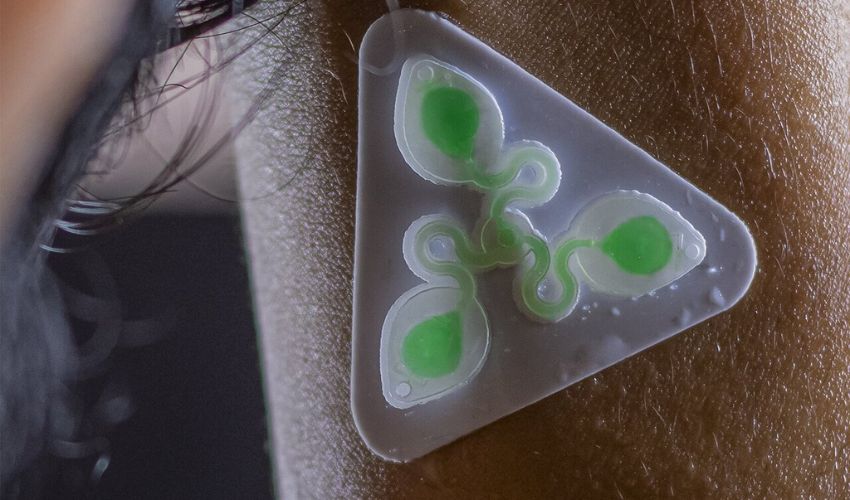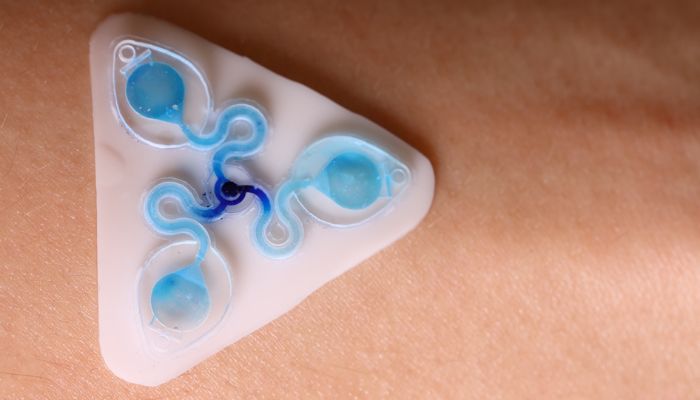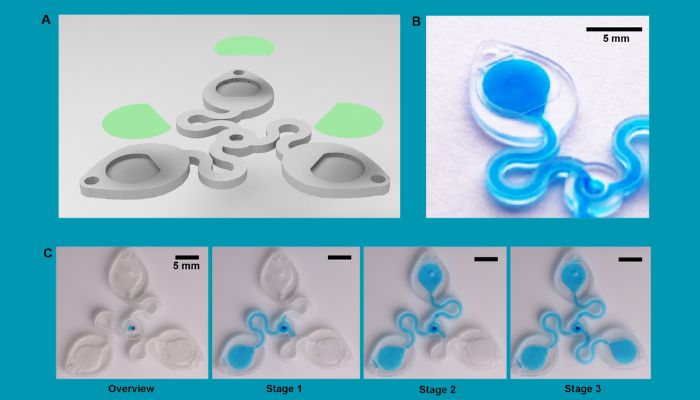
Summer is a great time of year. It is important to note that sweating can be uncomfortable and leave marks on our clothes. We may also become irritable or smelly. But did you realize that sweat is a vital tool for patients to monitor their health? Or that’s what researchers at the University of Hawai’i at Mānoa College of Engineering are betting on with a new project where they are using an innovative 3D printed wearable sweat sensor, nicknamed the “sweatainer,” in order to obtain key information about health and diseases.
Sweating has many benefits for the body. Sweating helps regulate body temperature and flush out toxins. Doctors can use it to track various health indicators. Researchers point out in this instance that it can provide clues on dehydration and fatigue as well as blood sugar levels. It also helps monitor more severe conditions. They include heart failure, diabetes, and cystic-fibrosis. This could be vital for maintaining the health of individuals with conditions such as cystic fibrosis and diabetes. In the United States, there are approximately 40,000 adults and children with the disease. The researchers were able create the innovative device using 3D printers.

The sweat sensor has been designed to be directly applied on the skin. (Photo Credit: Ray Research Group).
Benefits of 3D Printed Sweat Sensor
Although sweat collection may not be as well-known as blood sampling, it is used to test for various diseases, including cystic fibrosis. Traditional methods can be difficult and expensive, as they use microbore tubes or absorbent pads pressed against epidermis in order to collect sweat. The process requires trained personnel, expensive laboratory equipment and special handling. Wearable devices are still one-use even with their advent. The researchers created this wearable device using additive manufacturing. They claim that it will expand the capabilities of wearable sweat analyzers and be a huge leap forward for sweat analysis.
The sensor was created using a commercial DLP printer (though the brand was not mentioned) and is a small, wearable device that is similar in size to a child’s sticker. The device is capable of analyzing sweat, and it has several unique features. Researchers believe that these will drive innovation in the direction of more convenient, accessible and insightful health monitoring. Notably, the press release mentions the “multi-draw” sweat collection method which could allow for the collection of multiple, separate sweat samples for analysis on the device or in a lab. According to researchers, the method could make sweat collection more effective and open the door for at-home tests, sample storage for future research or better integration of existing health monitoring methods. In general, we’ve seen an increase in the use of medical 3D printers in the field of health care.
Tyler Ray, an author of the study and Assistant Professor at the Department of Mechanical Engineering, concluded. “3D printing enables an entirely new design mode for wearable sweat sensors by allowing us to create fluidic networks and features with unprecedented complexity. With the sweatainer, we are utilizing 3D-printing to showcase the vast opportunities this approach enables for accessible, innovative and cost-effective prototyping of advanced wearable sweat devices.” The entire research report is available for you to read if you would like to learn more. Click Here to Learn More.

Photo credit: Ray Research Group. Diagram showing the 3D printed sensor (photo by Ray Research Group).
What do think of this 3D sweat sensor printed in 3D? Let us know in a comment below or on our LinkedIn, Facebook, and Twitter pages! Don’t forget to sign up for our free weekly Newsletter here, the latest 3D printing news straight to your inbox! You can also find all our videos on our YouTube channel.
*Cover Photo Credits: Roxanne Kate Balanay, Tyler Ray/University of Hawai’i




